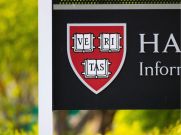As I’ve shown a number of times before, universities often give faculty job candidates points for their “contributions” to diversity, equity, and inclusion. In many cases, these contributions can make or break job candidates. Last week, I wrote about how this has happened as a matter of policy at the Ohio State University.
At Ohio State, many hiring committees fastidiously documented exactly what counted as “contributions to diversity” in their search process. The College of Arts and Sciences required every search committee to list the unique DEI contributions of each finalist. I acquired these reports through a public records request—read the full story in the Wall Street Journal—which means we have a rare inside look into how the policy works in practice.
I’ve written about how faculty job applicants at Ohio State faced a DEI litmus test and how the committees heavily weighed these diversity statements using ideologically-charged rubrics. Today, we take a look at how “diversity” factored into the evaluation of actual candidates.
It's worth noting that some of these reports read like a chore. Clearly, some search committees did not want to sacrifice scholarly rigor for the sake of rewarding diversity, equity, and inclusion. A small number of search committees even noted the dearth of conservative faculty on campus. Yet others go out of their way to highlight boutique identity categories and reward progressive identity politics.
- For a search in the Department of Comparative Studies, one scholar was listed as “a first generation, fat, queer scholar of color.” The report notes that another candidate “identifies as ‘a disabled scholar and queer woman of color.’”
- In a search for an art professor, one candidate’s DEI credentials included “decolonizing, land-based, transnational feminist praxis, and anti-racist art inquiry and praxis; contemporary Korean immigrant teen girls’ media cultures; immigrant/refugee youth; and decolonial Asian racial justice.”
At times, search teams highlighted ideologically-charged methodologies as a potential tool for increasing demographic diversity.
- For a search for a dance professor, a committee noted that a candidate would “greatly enhance our engagement with queer theory outside of the western epistemological approaches which would greatly support us both in recruitment and retention of diverse graduate populations interested in dance studies informed by diasporic ways of knowing and creating.”
- For another search in Dance and Health Wellness, the committee declared that it was “extremely important that whoever comes into this position is seen by all as supporting our core values of diversity, inclusion, and social justice.” One candidate was highlighted approvingly for saying that “unless we have the difficult and painful conversations that address privilege, systemic inequality, microaggressions, and white fragility, those systems remain institutionalized.”
For one candidate, a focus on critical race theory made up for his undesirable demographic background.
- Searching for a chair of the Department of Design, a committee notes that, “As a white male” one candidate “does not outwardly present as a diversity candidate.” It goes on: “However, we want to call attention to [the candidate’s] research which is focused on design for diversity equity and inclusion as exhibited by his most recent 2021 publication ‘Critical Race Theory, Design Education, and Change, Rehearsing Racial Equity: A Critical Anthology on Anti-Racism and Repair in the Arts .’”
Others simply came with a long list of identity categories.
- One applying for a job in Chemical and Biochemical Education reported “that her experiences as a queer, neurodivergent Latinx woman in STEM has provided her with an important motivation to expand DEI efforts beyond simply representation and instead toward social justice”
Other reports suggest a mundane political bias.
- For a search in Physics, one candidate’s “awareness of some of the challenges facing URGs in higher education is partly informed through his marriage to an immigrant in Texas in the Age of Trump.”
- For a job in Communications, one candidate was lauded for tackling “a number of DEI issues, including media representation of refugees, gender issues, news framing of white supremacy and the alt-right movement, and the #MeToo movement.” The committee noted that “the strength of [this candidate’s] commitment with respect to DEI issues was an important factor in the committee’s decision to offer her a campus interview.”
More tomorrow.
By dankeck - https://www.flickr.com/photos/140641142@N05/30615061204/, CC0, https://commons.wikimedia.org/w/index.php?curid=57347822













